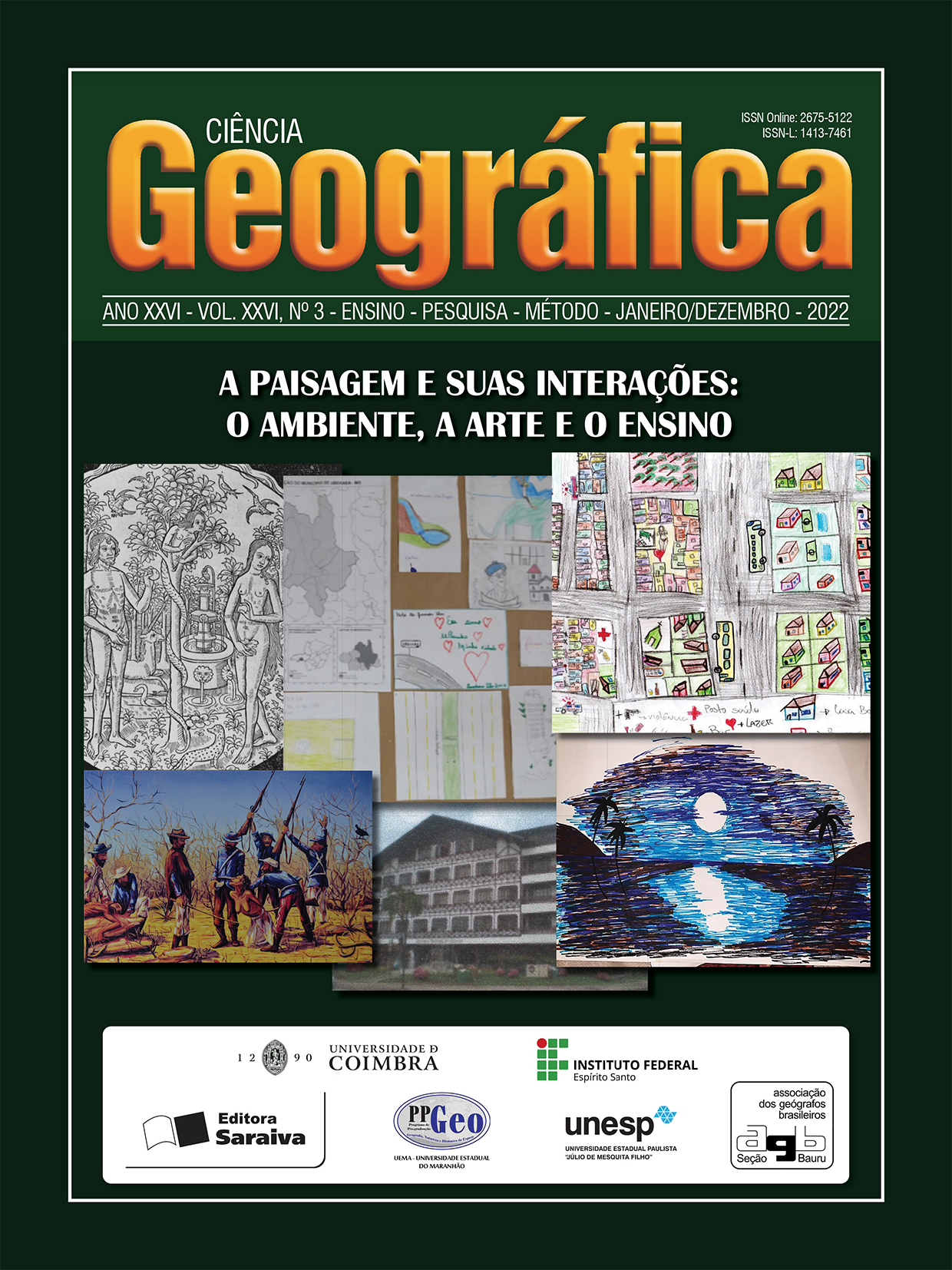LANDSCAPE STUDY IN THE EARLY YEARS AND GEOVISUALIZATION: A LOOK AT HISTORICAL-CULTURAL THEORY
DOI:
https://doi.org/10.18817/26755122.26.3.2022.3054Keywords:
Landscape. Geovisualization. School Cartography. Historical-Cultural Psychology.Abstract
This article consists of a theoretical essay, whose objective is to analyze the epistemological and methodological subsidies for the teaching of Geography offered by the Theory of Geovisualization, from the landscape category, mobilizing the higher psychic functions, in the production and interpretation of maps. Based on the development of the human psyche from the Historical-Cultural Theory, and the practices of cartographic alphabetization, an analogy is proposed to the axes of the “Cube” model proposed by MacEachreen: a) “public-private”, related to formation of the superior psychic functions in the elaboration and reading and interpretation of maps; b) “presenting the known-revealing the unknown”, based on the concepts of Current Development Level, Imminent Development Zone and Mediation; c) “high-low interaction”, from the concept of internalization and appropriation of cartographic language. The connection between this knowledge brings the opportunity to re-signify the practices of teachers and open new theoretical-methodological horizons in the work of cartography with children.


